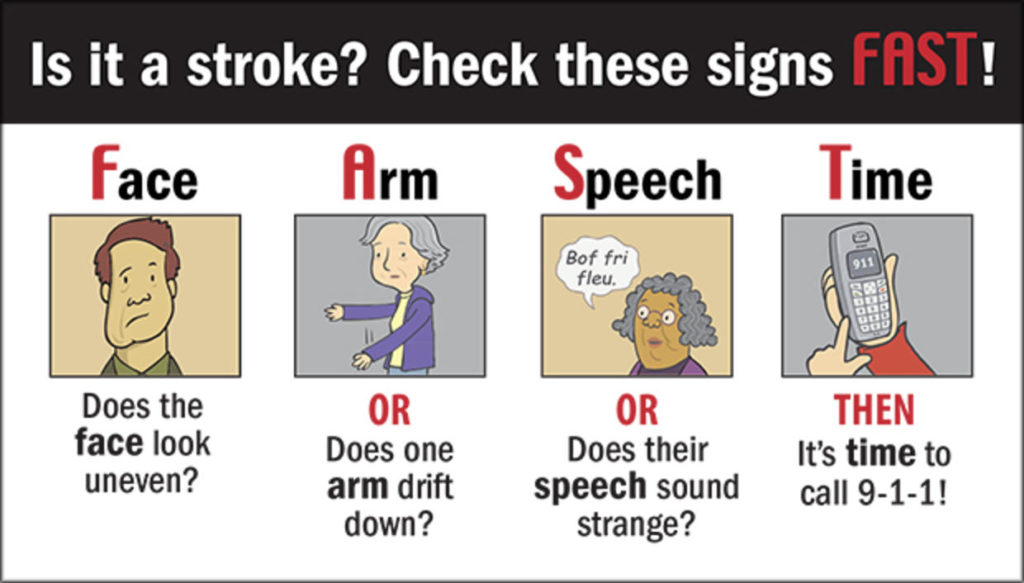
Dealing with a Stroke
What is it?
While there are different types of strokes, in the simplest terms, a stroke is simply a sudden interruption of blood supply to the brain.
What happens?
The brain needs the oxygen which the blood supplies. Every minute your brain is deprived of blood and oxygen, about 2 million brain cells die. The longer the brain goes without oxygen, the more permanent the damage. Depending on where the blood is cut off can impact what happens. You may lose your vision or your ability to speak or the use of one side of the body. Early warning signs can include numbness or paralysis in the face or an inability to comprehend. Sometimes sudden, severe heachaches especially if accompanied by dizziness, altered consciousness or vomiting can indicate a possible stroke.
What should you do?
Act F.A.S.T.
Fast is an acronym to help you remember the signs of a stroke and how you should respond:
- Does the Face look uneven?
- Does one Arm droop down?
- Is their Speech garbled?
- Then it’s Time to call 911
If any one of more of the above symptoms is newly present, it’s Time to call 911. Because the longer the brain goes without oxygen the worse the damage becomes, it is imperative to act quickly. Time is of the essence.
After a stroke
Most likely, a period of care in a skilled rehab setting will be necessary. Once you are able to return home, the discharge team will help you think about what modifications will help assure your independence and safety at home. Be sure to eliminate risk factors. Those who have suffered a stroke are at higher risk for having another. Lastly, don’t go it alone. Get help from friends and family and utilize home care to help maintain your independence.

